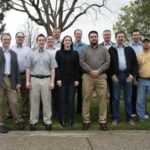|
|
This date is March 17, 2011 at 15:30-17:30.
Why do we have Wi-Fi controllers in the enterprise? Airespace co-founder Bob O’Hara explains at WFD1
Watch on YouTube
Watch on Vimeo
In his presentation at Wireless Field Day 1, Bob O’Hara, co-founder of Airespace, delves into the origins and evolution of the controller-based architecture for enterprise Wi-Fi networks. He recounts the early 2000s when managing a multitude of access points was a significant challenge for enterprises. To address this, Airespace developed a centralized hierarchical system that stripped functions from individual access points and centralized them into a controller. This architecture allowed for easier configuration and management of wireless LANs, as the controller could automatically push configurations to all access points and collect data for analysis. The system’s ability to present this data in a user-friendly format with graphical overlays helped enterprises optimize their wireless networks effectively.
O’Hara explains that the decision to centralize functions was driven by economic constraints. At the time, the cost of powerful processors that could handle all necessary functions within each access point was prohibitive. Instead, Airespace leveraged the growing capabilities of Linux-based embedded processing and network processing silicon to build a robust central controller. This controller could process large amounts of data quickly and redistribute it to the access points, adding value that individual access points could not provide due to their limited processing power. This approach proved successful, leading to Airespace’s acquisition by Cisco in 2005, which further validated the effectiveness of their solution.
Reflecting on his journey, O’Hara notes the shift in technology and economics that has since occurred. Modern access points now have sufficient processing power at a lower cost, enabling a more distributed architecture as seen in Aerohive’s model. Despite the differences in physical implementation, O’Hara emphasizes that the core achievement of Airespace was making wireless LANs attractive and manageable for large enterprises. He highlights the dramatic increase in the adoption of wireless LANs from the early 2000s to the present, attributing this success to the foundational work done by Airespace. O’Hara concludes by expressing his long-held vision, inspired by science fiction, of achieving instantaneous, ubiquitous wireless communication, a goal that Wi-Fi technology is steadily making a reality.
Personnel: Bob O'Hara









